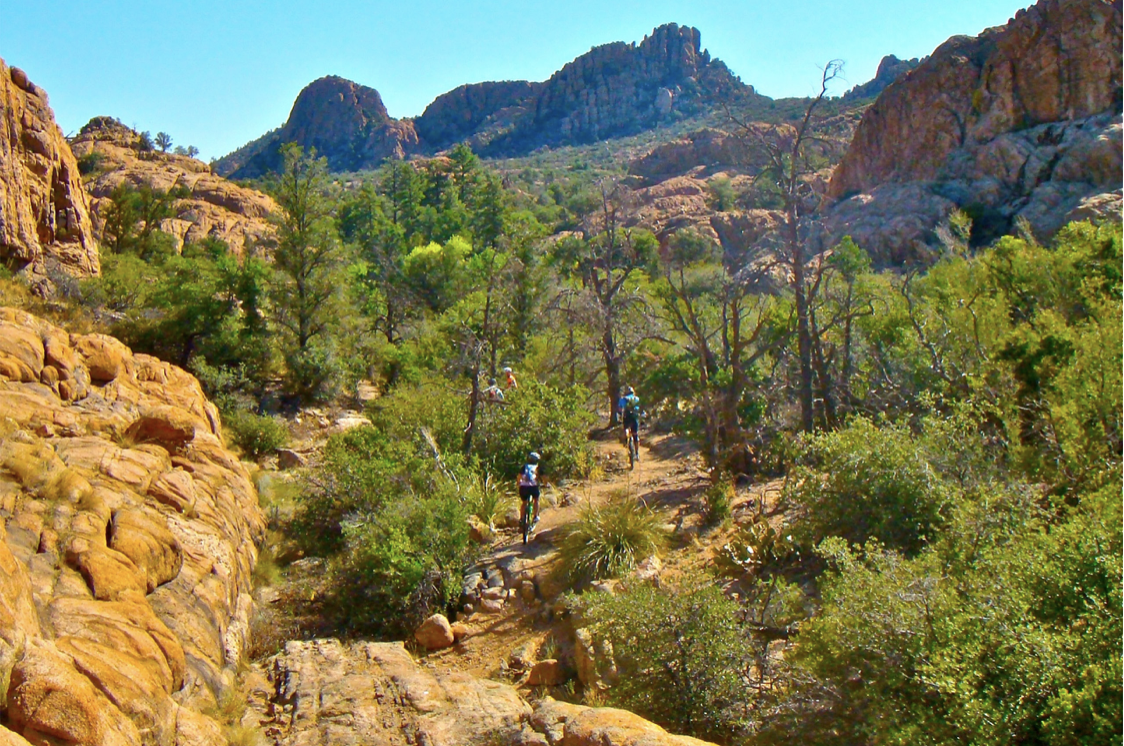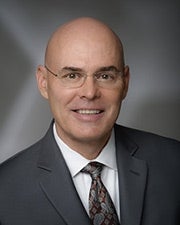
ASU Lodestar Center helps Sun Corridor Trail Alliance find its footing

Segment 4 of the Sun Corridor Trail links Prescott to Phoenix through approximately 118 miles of trail, connecting to the existing Prescott Circle Trail. The landscape varies from high elevations of desert, to pine and juniper forests. The Sun Corridor Trail then joins the Black Canyon Trail, and decends into the lower elevations of the Sonoran Desert.
by Alexandra Conforti, ASU Lodestar Center for Philanthropy and Nonprofit Innovation
January 13, 2021
Kent Taylor says the idea had been floating around for three or four years: To create a new regional trail system from Douglas, Arizona, to Las Vegas, Nevada, a longer complement to the Arizona Trail that cuts across the state from north to south. This new trail would connect existing trail loops in Southwestern communities, never straying too far from civilization, and introduce nature-based tourism opportunities. But how to make it happen? wondered Taylor, the leader of the project and director of Pinal County Open Space and Trails.
The answer was the Sun Corridor Trail Alliance, a nonprofit organization launched with the help of the ASU Lodestar Center for Philanthropy and Nonprofit Innovation and a slew of partners, with the mission of developing and promoting the Sun Corridor Trail. The organization was made possible in part by the National Park Service, which awarded a grant to the nascent organization for a consultancy with the ASU Lodestar Center.
 John Phelps (pictured at left), a Knowledge Specialist for the ASU Lodestar Center's Capacity Building Initiatives and Nonprofit Management Institute, knew that to make this trail system a reality, the Center needed to “help in the formation of a nonprofit that would be in the position to gather partners and help obtain grants and revenue and resources necessary to plan the corridor, the trail, as well as to build it.”
John Phelps (pictured at left), a Knowledge Specialist for the ASU Lodestar Center's Capacity Building Initiatives and Nonprofit Management Institute, knew that to make this trail system a reality, the Center needed to “help in the formation of a nonprofit that would be in the position to gather partners and help obtain grants and revenue and resources necessary to plan the corridor, the trail, as well as to build it.”
Taylor added, “We came to a point where we knew we needed some assistance if we
were going to take the project to the next level.”
The next step was to attend the remote sessions with ASU Lodestar Center knowledge specialists like Phelps and determine the best procedures and actions to move the project in the right direction. Six 1-hour remote sessions between August and October, involving all 11 coordinating organizations and the Center’s consultants, focused on a rundown and examination of the key elements that go into organizing and maintaining a nonprofit organization: bylaws, strategy, big picture ideas and objectives that will help construct and build the nonprofit organization.
Working in a completely virtual environment can be difficult, but Phelps said it worked well for this process, as many of the organizations involved are spread throughout Arizona.
Setting up a roadmap and timeline for the trail project proved to be key in establishing a nonprofit that would have a lasting impact. This included determining an understanding of “what the nonprofit would have to accomplish within the first 12 to 24 months of its existence,” Taylor said, and making sure those objectives, such as outreach for funding and a memorandum of understanding (MOU), were reached.
“Since we have identified these objectives, all of those things have already had some successes as we end the year. We’ve already secured some funding from the Arizona Office of Tourism to create a website, we have a MOU that’s currently going through the legislative approval process with several counties on board to get this passed by the end of January,” Taylor said. He added that they also have obtained a fiscal sponsor and recently gotten the articles of incorporation back that will be ready to file in early 2021.
The Center’s training process led the group through an initial set of bylaws to provide the structure and foundation for standing up the organization. Also considered was the formation of a master plan, involving obtaining permits, permissions, and licenses from all the different jurisdictions covering roughly 1,500 miles of land that the route will run through: tribal lands, various counties and cities, and state and federal land.
The trail project could take up to 10 years, Phelps said, but individual trails and sections of the project have been opening to the public as they get completed, which is roughly 600 miles of the trail so far. An essential aspect to the route is its availability to hikers and bikers, while maintaining a close distance to inhabited areas, unlike other Arizona trails.
“The mission of the Sun Corridor Trail Alliance is to engage citizens, communities, nonprofits, and local, regional, state and federal governments to establish a dynamic organization dedicated to planning, developing and sustaining a world-class interstate trail,” according to the organization’s website.
 Specifically, the Sun Corridor Trail begins in a loop around Las Vegas, Nev., and when completed will consist of regional trail loops around Williams, Prescott, Kingman, Flagstaff, Phoenix, Sedona, Casa Grande, the Picacho Mountains and Tucson, and link to rail corridors that connect Benson, Fairbank, Sierra Vista, Tombstone, Sonoita, Patagonia, Naco, Bisbee, Douglas and Pearce; the long-distance regional trail is designed to link significant urban, suburban and other rural trail systems throughout Arizona.
Specifically, the Sun Corridor Trail begins in a loop around Las Vegas, Nev., and when completed will consist of regional trail loops around Williams, Prescott, Kingman, Flagstaff, Phoenix, Sedona, Casa Grande, the Picacho Mountains and Tucson, and link to rail corridors that connect Benson, Fairbank, Sierra Vista, Tombstone, Sonoita, Patagonia, Naco, Bisbee, Douglas and Pearce; the long-distance regional trail is designed to link significant urban, suburban and other rural trail systems throughout Arizona.
The collective effort of individuals in parks and recreation departments, county officials and supervisors, the Maricopa County Trails Association, the National Park Service, The Arizona Office of Tourism and the ASU Lodestar Center allowed members to advance their skills in the nonprofit sector and organize a strategic, well-informed plan for the trail project that is expected to prosper both recreationally and economically.
“I think one of the great things about the Lodestar Center is that the content that has been designed and developed over the years is really able to scale that training or that facilitation based on the needs and the level of experience of the participants,” Phelps said.
Taylor said, “Within less than six months, we’re in a place where we can actually create the nonprofit.”
Collecting bylaws from other organizations that were well established and that had similar missions as the Sun Corridor Trail Alliance introduced the pros and cons of other organization’s bylaws, the number of board members and their voting procedures, and timelines. Phelps said this process helped lead their own nonprofit into a better place.
An array of experience and knowledge was brought into the creation of the Sun Corridor Trail Alliance, as the majority of the partners on the project have been through this arena of work prior to this project, but Taylor said that having a third party like ASU moved the project forward.
To learn more about how the ASU Lodestar Center can help your organization with strategic planning, capacity building challenges and more, contact Jill Watts at Jill.Watts@asu.edu.
- After completing certificate programs, alumna Rochell Planty reaps the benefits of continuing her nonprofit education
- Ready to grow its impact, Volunteer in Paradise turned to the Service Enterprise Initiative